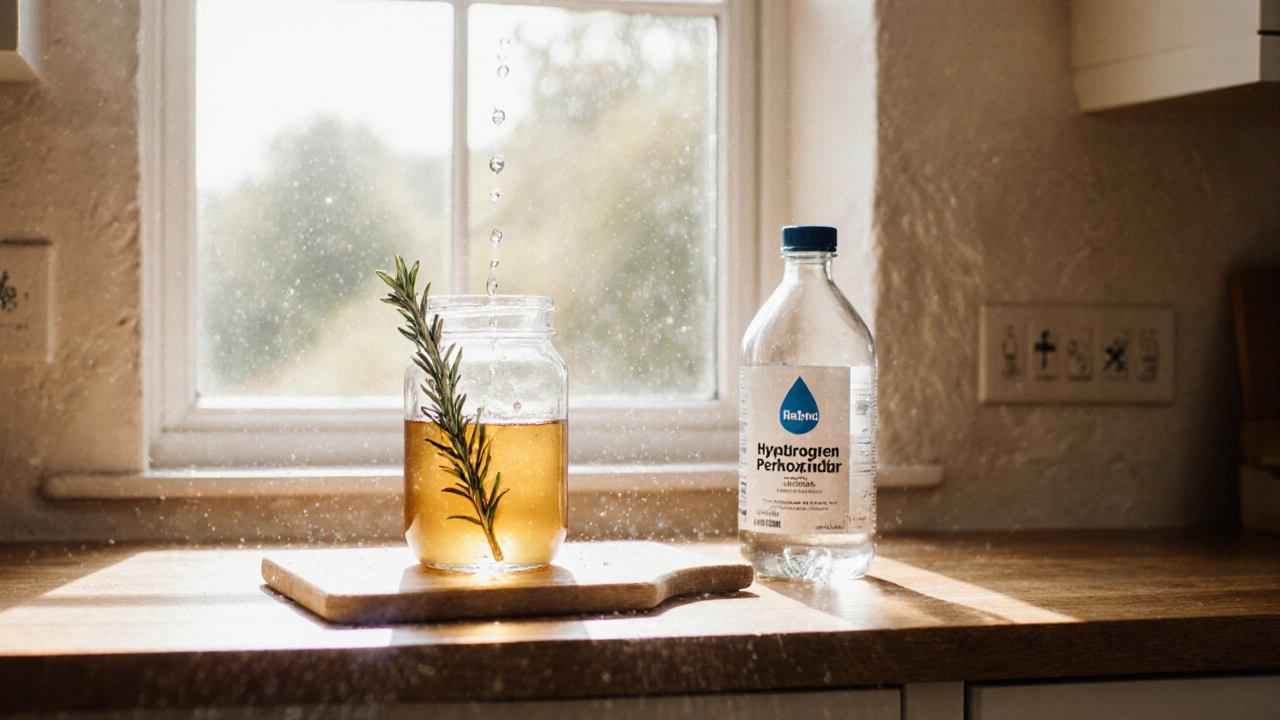Vinegar Disinfectant – Natural Cleaning Made Easy
If you’re looking for a cheap, non‑toxic way to kill germs around the house, white vinegar might be the answer. It’s already in most kitchen cabinets, smells sharp, and leaves no harmful residue. Below we break down how it works, when it’s a good fit, and how to mix it safely for everyday disinfection.
How Vinegar Works as a Disinfectant
White vinegar is about 5 % acetic acid. That acid can break down bacterial cell walls, dissolve mold spores, and cut through grime. It’s especially good against E. coli, Salmonella, and common household fungi. However, it’s not a miracle kill‑all – it won’t reliably inactivate stronger viruses like norovirus or COVID‑19. For those, you’ll need a bleach‑based solution or an EPA‑registered sanitizer.
Safe DIY Recipes and Tips
The simplest spray is one‑part vinegar to one‑part water. Put the mix in a spray bottle, label it, and you have a ready‑to‑use disinfectant for countertops, bathroom tiles, and high‑touch surfaces. Adding a few drops of tea‑tree oil or lemon oil boosts the scent and adds mild antimicrobial power.
For stubborn grime, combine ½ cup vinegar with ½ cup baking soda in a bowl – it fizzes, loosening residue, then spray the fizzed solution on the surface and wipe clean. Always test a small hidden area first; vinegar can etch natural stone, waxed wood, or delicate finishes.
When using vinegar on fabrics, mix 1 cup vinegar with 1 L of hot water. Soak or spray the area, let it sit for 5‑10 minutes, then launder as usual. This helps kill odor‑causing bacteria without harsh chemicals.
Safety first: wear gloves if you have sensitive skin, keep the area well‑ventilated, and never mix vinegar with bleach. The reaction creates toxic chlorine gas, which can be dangerous even in small amounts.
Compared to bleach, vinegar is cheaper, safe around kids and pets, and biodegradable. Its downsides are a shorter contact time (usually 1‑2 minutes) and limited effectiveness against tougher pathogens. If you need a broad‑spectrum sanitizer, pair vinegar cleaning with a separate EPA‑approved product.
Here are a few quick use‑cases:
- Kitchen counters: Spray the 1:1 solution, let it sit, then wipe with a clean cloth.
- Bathroom mirrors: Spray, wait 30 seconds, and wipe dry for a streak‑free shine.
- Floor mop water: Add ¼ cup vinegar per gallon of warm water to cut grime and kill microbes.
- Trash can liners: Spray the inside before adding a new bag to control odor and bacteria.
Vinegar also helps break down hard water deposits on appliances. Run a cup of vinegar through your dishwasher’s empty cycle, or soak a coffee maker’s reservoir for an hour and rinse thoroughly.
In short, vinegar is a versatile, eco‑friendly disinfectant for everyday cleaning. It won’t replace professional-grade sanitizers in hospitals, but for a typical home it offers a simple way to keep surfaces fresh without harsh chemicals.
Give it a try on a few test spots, note the results, and you’ll quickly see where vinegar shines and where you still need a stronger agent. Your wallet, your health, and the planet will thank you.

Vinegar vs Hydrogen Peroxide: Which Disinfects Better?
Compare vinegar and hydrogen peroxide as disinfectants, covering their chemistry, effectiveness against germs, safety, usage tips, and best‑fit scenarios for home cleaning.
Read More